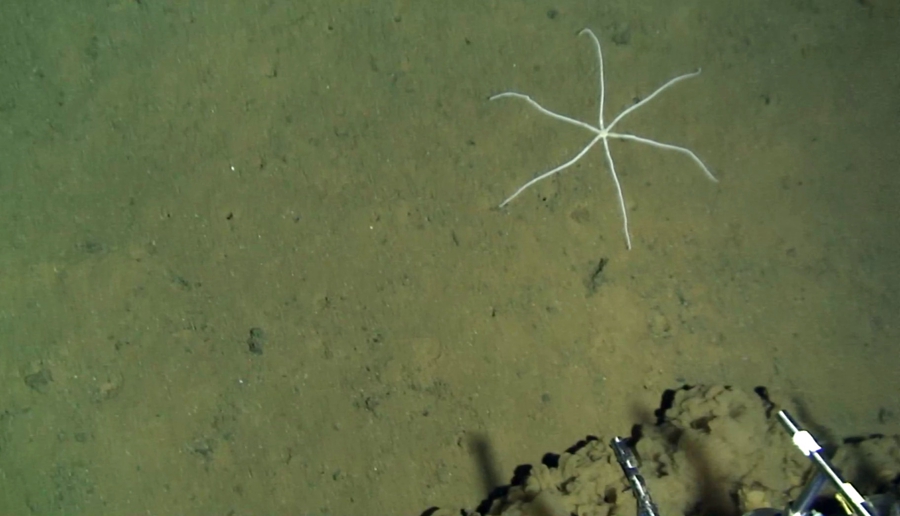In the deep ocean, China stands out
 |
|
Jiaolong takes a photo of a starfish in the deep sea at a depth over 6,500 meters in the Yap Trench in the Pacific Ocean, on June 15, 2017. [Photo/Xinhua] |
Collecting samples
The third stage was also fruitful. On the first dive into the Mariana Trench on May 23, the vessel collected 26.3 kilograms of basalt samples and 16 liters of seawater, according to the State Oceanic Administration.
But the most intriguing rewards were the deep-sea creatures, including a sea sponge, a brittle star, two starfish and the catch of the day, a 35-centimeter red sea cucumber.
Named after a mythical dragon, Jiaolong reached its maximum depth of 7,062 meters in the Mariana Trench in June 2012. China is building a new mother ship to operate and support the submersible, with an expected launch in 2019.
To support maritime research, China also plans to build a seafloor scientific observation network this year, the first national science project in the maritime field. The project will be completed within five years at a cost of more than 2 billion yuan ($294 million).
Once the network is completed, China will join a dozen countries in the world that have such facilities, including the United States, the United Kingdom, Germany, France and Japan.
The cable-based network, connected with nodes of detectors and samplers, will constantly monitor and study the bed of the East China Sea and South China Sea, allowing scientists to study climate change, prevent and manage marine disasters and provide data for national security purposes and future explorations.
- Chinese submersible Jiaolong to dive in Yap Trench
- China's manned submersible Jiaolong completes 150th dive
- Chinese submersible Jiaolong completes 20th dive in Mariana Trench
- China's submersible Jiaolong conducts 5th dive in Mariana Trench
- Chinese submersible Jiaolong dives to 6,699 meters in Mariana Trench






















